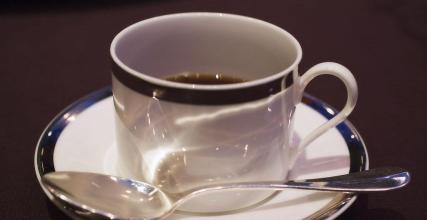An introduction to the characteristics of the sour and sweet Costa Rican goddess manor coffee flavor and taste of a variety of fruits
Costa Rica is located in the Central American isthmus, belonging to North America, latitude 10 °north, longitude 84 °west. It is bordered by the Caribbean Sea to the east and the North Pacific Ocean to the west, with a coastline of 1290 km (212km on the east coast and 1016 km on the west coast). Costa Rica borders Nicaragua in the north (309 km long border) and Panama (639 km long border) south-southeast. There are a total of 51100 square kilometers, including 50660 square kilometers of territory and 440 square kilometers of territorial sea, which is slightly smaller than West Virginia in the United States, which is equivalent to Ireland's natural resources of iron, manganese, mercury, bauxite, gold, silver and so on. The reserves of bauxite, iron and coal reach 150 million tons, 400 million tons and 50 million tons respectively. The recent situation is mainly distributed in the central gold belt area of the northwestern Tilaran Cordillera Mountains. Calcium carbonate is distributed in the northwest and has high taste. The purity of calcium carbonate extracted from limestone can reach 99.5%. Costa Rica attaches great importance to environmental protection and the exploitation of natural resources is strictly restricted.
Oil is completely dependent on imports, mainly from Colombia and other countries, and is monopolized by the National Oil Company (RECOPE), with an average annual import of 3 million tons of crude oil. Since 2012, the national oil company has suspended crude oil refining production due to aging facilities, and all fuel oil has been imported instead. In 2013, Costa Rica imported 19.3 million barrels of oil, with imports of US $2.3 billion, accounting for 5.5 per cent of GDP.
Citrus, maple syrup, red cherry, vanilla, a variety of fruits compound sweet and sour. This cup of coffee is called "Goddess". Today, Chongqing Brista Coffee training School will introduce you to a coffee bean produced by the Goddess Manor of Costa Rica in the United States. The goddess bean is a micro-batch Geisha (Rosa / geisha) breed of the Goddess Manor (Dota El Diosa) in Costa Rica, Central America. Rose summer has more or less heard of it. It is a precious bean seed from Ethiopia, the country of origin of coffee. Introduced to Central America, after several twists and turns, it won the cup test prize and became a blockbuster.
The Goddess Manor in Costa Rica was established in 1960. What we have to say about this "goddess" rose summer: the goddess is planted by organic farming, naturally shaded by local native trees and fruit trees, and organic fertilizer uses coffee and cherry pulp to mix molasses. Add fertile soil with high mineral content in the adjacent mountain area with microbial fermentation to produce organic fertilizer that can enhance the disease resistance of coffee, and the soil is suitable for California earthworm cultivation.
When the coffee fruit is ripe, it is picked by hand, only the ripe red-purple berries are picked. The processing method of raw coffee beans is washed with water, which is treated at a very unique constant temperature. The degree of fermentation makes the clarity and complexity of coffee get an excellent balance, makes its flavor show better stability, and shows the very special flavor of Geisha (Rosa / Geisha) one by one. It is really intoxicating. Lajas is also the first manor in Central America to start honey treatment and natural sun treatment. Tanning is a very traditional practice, which uses the least resources, but because there are too many uncontrollable factors, it is very difficult to do well. Francesca has added many innovations, such as using the sugar meter (Brix meter), which is often equipped in the wine industry, to measure the sugar content of the fruit, and to determine the best time and treatment of harvest according to the sugar content of Brix. Only those with more than 20% sweetness will be exposed to the sun. The Brix value of general fruit is 14 for apple, 12 for lemon and 18 for passion fruit, but the coffee cherry in Lajas can reach 21 / 22%.
The natural treatment process of French Sika is quite laborious. The artificially picked high-sugar coffee fruit is first placed in an African viaduct in the sun for about 10 days, and then placed in a plastic-covered greenhouse to create more direct heat and continue to dry. until the water content reaches 11.5%. The slow drying process allows raw beans to develop more natural sweetness from the inside, but it also needs to be taken care of more carefully and constantly turned. In the end, the red cherries turn black, giving off the aroma of fruitcake, black sugar and even sherry. This is the "Perla Negra"!
There are eight Costa Rican producing areas, of which Tarazu, the Central Valley and the Western Valley are recognized as the three best producing areas. Las Lajas is located in the foothills of Sabanilla de Alajuela and Poas Volcano in the Central Valley. Strictly speaking, "Lajas" is actually the name of the Chakon family processing plant. The name of the manor is Finca La Mirella, but bean bakers all over the world are also used to calling it Finca las lajas.

Important Notice :
前街咖啡 FrontStreet Coffee has moved to new addredd:
FrontStreet Coffee Address: 315,Donghua East Road,GuangZhou
Tel:020 38364473
- Prev

An introduction to the characteristics of coffee flavor and taste in Sidamotad Manor, Ethiopia.
In February 1977, Lieutenant Colonel Mengistu Haier Maryam (MENGISTU HAILE MARIAM) launched a military coup and served as Chairman of the interim military Administrative Council and head of State. In 1979, the Ethiopian Labor people's Party Organization Committee, dominated by soldiers, was established to implement an one-party system. In 1984, the Ethiopian Workers' Party was formed according to the Soviet Communist Party model. Mengistu, September 1987
- Next

Introduction to the taste characteristics of coffee bean flavor producing areas of Hope Manor in Colombia
CafeGranjaLaEsperanza's estate is located in eight unique microclimate regions of the three Colombian mountains, giving their botanists an excellent opportunity to experiment with different microclimates and land flavors, different treatments, and different coffee varieties, combining the rationality of scientists, the sense of smell of businessmen and their insistence on the quality of coffee. For example, for different microclimates and
Related
- Does Rose Summer choose Blue, Green or Red? Detailed explanation of Rose Summer Coffee plots and Classification in Panamanian Jade Manor
- What is the difference between the origin, producing area, processing plant, cooperative and manor of coffee beans?
- How fine does the espresso powder fit? how to grind the espresso?
- Sca coffee roasting degree color card coffee roasting degree 8 roasting color values what do you mean?
- The practice of lattes: how to make lattes at home
- Introduction to Indonesian Fine Coffee beans-- Java Coffee producing area of Indonesian Arabica Coffee
- How much will the flavor of light and medium roasted rose summer be expressed? What baking level is rose summer suitable for?
- Introduction to the characteristics of washing, sun-drying or wet-planing coffee commonly used in Mantenin, Indonesia
- Price characteristics of Arabica Coffee Bean Starbucks introduction to Manning Coffee Bean Taste producing area Variety Manor
- What is the authentic Yega flavor? What are the flavor characteristics of the really excellent Yejasuffi coffee beans?

